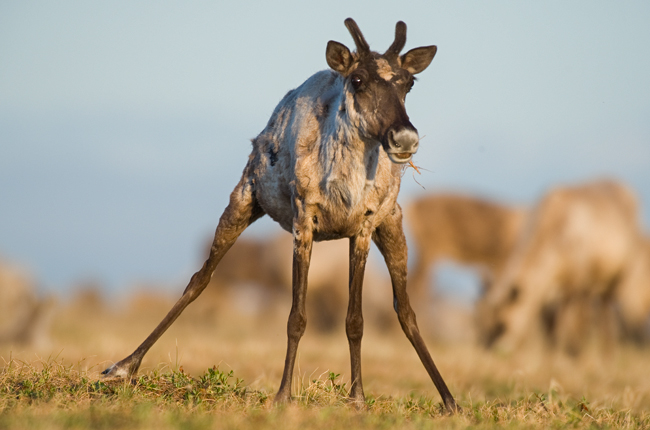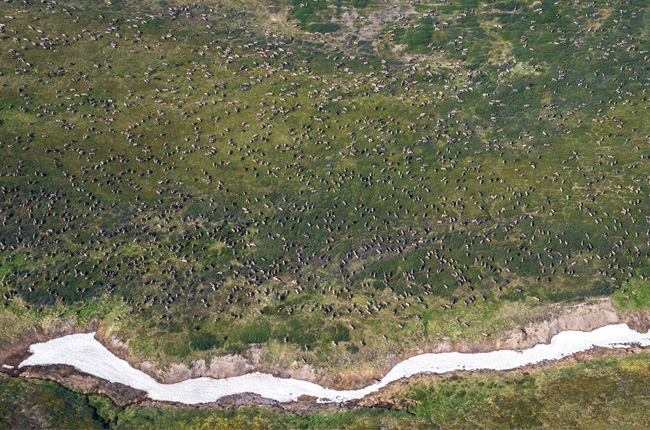Development in the Refuge, in the calving and post-calving range of the Porcupine caribou herd, poses significant risks to one of the last, healthy, large-migratory caribou herds in the world and the people who depend on it.
Comprehensive scientific assessment by internationally recognized experts shows oil and gas development in the Refuge will result in decreases in calf survival, overall herd size and resilience. A decline in the herd will very likely have serious impacts on the Gwich’in, Na-cho Nyak Dun, Vuntut Gwitchin, Tro’ondek Hwech’in, and Inuvialuit Peoples in Canada as well as the Alaskan Inuit and Native American Peoples who depend on the herd.
A 2019 study by internationally respected experts, commissioned by the Government of Canada, Government of Yukon and Government of Northwest Territories, found that under the preferred drilling scenario identified in the BLM’s Final EIS for the Coastal Plain Oil and Gas Leasing Program, the Porcupine caribou herd could decline by 17-18% over ten years. This study was based on over 40 years of scientific monitoring and co-management data. You can read the full study here.
Throughout the EIS process to date, the BLM has failed to adequately address the risks of development to the Porcupine caribou herd and failed to provide confidence that these risks can be effectively mitigated.
All of the Parties of the Porcupine Caribou Management Agreement agree that development in the Arctic National Wildlife Refuge could have significant detrimental effects on the Porcupine caribou herd, and that consideration must be given to Indigenous People’s subsistence, way of life, and well-being.


